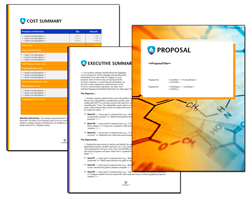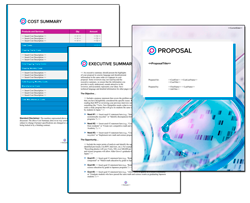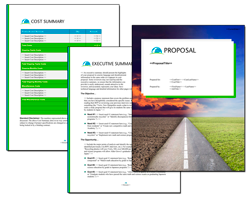
How to Write a Research Proposal: Tips and Examples
You've come to the right place if you need to write a research proposal or grant application. We'll show you the key steps-identifying your research question, clarifying objectives, and establishing significance-necessary to create a winning proposal.
Key Takeaways
- Research proposals are diverse, including solicited and unsolicited proposals. Each is tailored to align with specific guidelines, allowing for flexibility and demonstrating relevance and impact. Funding agencies play an essential role in evaluating these research proposals to ensure they meet the necessary standards and objectives.
- Crucial components of a successful research proposal include a research question, clear objectives, and a strong argument for the study's significance, structured to guide the project and persuade reviewers.
- Effective research proposals must have an organized structure with sections such as the introduction, methodology, and ethical considerations. They must also address logistical elements like budget and timeline and maintain scholarly rigor.
Types of Research Project Proposals

Research proposals come in various shapes and sizes, each with a specific purpose and guidelines. Understanding these different types is crucial for tailoring your proposal to meet the expectations of funding agencies and reviewers, especially for scholars seeking grant funding.
Solicited proposals are written in response to a Request for Proposal (RFP) from a funding agency interested in a particular research problem. These are often competitive and require a precise alignment with the agency's goals. On the other hand, unsolicited proposals are submitted by researchers in response to a general call for proposals within a given field of study. These allow for more flexibility but must demonstrate significant relevance and impact.
Other types of proposals include:
- Pre-proposals or letters of intent: summaries that help sponsors decide whether to invite a full proposal
- Renewal proposals: request additional funds to extend the scope of an ongoing project
- Supplement proposals: seek extra resources for an active project during its approved period
- Subaward or subcontract proposals: involve transferring part of the research effort to another institution
- Limited submission proposals: restrict the number of submissions from a single institution
- Concept papers: provide a preliminary overview of a proposed project to gauge interest and receive feedback before submitting a full proposal.
Each type of research proposal serves a unique purpose, and understanding these distinctions can help you choose the right approach for your research project. Writing research proposals involves recognizing which type best fits your research goals and the funding agency's requirements.
Unlocking the Essentials of a Research Proposal
At the heart of every successful research proposal lie three important components: a research question, clearly defined objectives, and a strong justification of the study's significance. These elements guide your research project and persuade reviewers of its value and feasibility.
Creating a research proposal is an exercise in critical thinking and effective communication. You must present your ideas clearly and persuasively, demonstrating your deep understanding of the field and the potential impact of your proposed research. Including a feasibility study can further illustrate your research's potential impact and feasibility. Each section of your proposal should work together to tell a coherent story about why your research matters and how you plan to achieve your goals.
Creating Your Research Question

A well-written research question is the cornerstone of a good research proposal. It guides the direction of your study and keeps your research focused and relevant. The question should be:
- Clear
- Concise
- Specific
- Addressing a gap in the existing research or exploring a new angle on a well-studied topic.
Formulating a hypothesis alongside your research question can further refine your study's focus and provide a clear direction for your investigation.
Consider what you want to discover or prove when creating your research question. Avoid broad questions that can lead to an unfocused study. Instead, narrow your focus to a specific issue that can be thoroughly investigated within the scope of your project. Remember, losing focus on the primary research question can dilute the impact of your proposal.
Defining Your Research Objectives
Once you have a clear research question, the next step is to define your research objectives. These specific, measurable goals outline what you aim to achieve with your research. Clear and achievable objectives with measurable outcomes guide and help you stay on track throughout your study.
Your research objectives should be closely aligned with your research question and framed to make them easy to measure and evaluate. This clarity helps you conduct your research more and reassures reviewers of the feasibility and focus of your proposed study.
Establishing the Significance: Conducting a Literature Review
Highlighting the significance of your research is crucial for convincing reviewers of its value. You need to clearly explain how your research will contribute to the field, what new knowledge it will generate, and why it is important to investigate this topic.
Discuss the potential impact of your research on knowledge, practice, and policy. Show how your study addresses a significant gap in the existing literature or offers a new perspective on a well-known issue. This research addresses the knowledge gap by providing insights yet to be explored. Establishing your research's significance helps demonstrate its broader implications and potential benefits.
Structuring Your Research Proposal for Clarity and Impact
A well-structured research proposal presents your research plan clearly and makes a case for its importance. Proper structuring ensures that each section flows logically into the next, making it easy for reviewers to follow your argument and understand your research approach. In this context, the research proposal plays a vital role in conveying the objectives and goals of your study.
Your research proposal should include the following sections:
- Title page
- Introduction
- Literature review
- Detailed research objectives
- Comprehensive methodology section
- Ethical considerations
- Budget
- Appendices
Additionally, it is essential to include a project timeline as part of the proposal structure to outline the schedule and milestones of your research.
Each section is important in presenting your research plan and should be created carefully to ensure clarity and impact.
An effective structure helps keep your proposal focused and easy to follow.
The Introduction: Setting the Stage

The introduction is your chance to set the stage for your research. It should capture the reader's interest, provide context for your study, clearly state the research question, and present the problem statement and hypothesis. An effective introduction creates a solid first impression and sets the stage for the rest of the proposal.
Begin by posing your research question and presenting your hypothesis or line of inquiry. Define the scope and boundaries of your study, and explain why it is important to investigate this topic. Assess the study's significance by questioning the interest in the research domain and describing the new knowledge your study will contribute.
Methodology Mastery: Designing Your Study
The research methodology section details how you will conduct your study. It should demonstrate that your research design and methods are well-suited to answer your research questions and are feasible. This section should be thorough enough to enable replication of the study.
To ensure that your research objectives correspond with the chosen data collection methods to achieve the aims of your study, you should:
- Describe the population and sample
- Explain your data collection strategies, including the sampling methods used
- Outline the specific procedures you will use
- Provide the anticipated duration of the study
- Specify the tools and software for data analysis
By following these steps, you can ensure that your research methods align with your study objectives.
Results and Reporting: Envisioning the Outcome
In the results section, outline the type of data you will collect, your data analysis plan, and how you plan to analyze and report your findings. This section should give reviewers a clear picture of what to expect from your study and how the results will be communicated.
Discuss the data analysis plans involving data reduction and reconstruction. Additionally, you need to address the calculation of sample size. Explain how you will maintain accuracy and clarity in all graphical representations of data and ensure proper citations for any sourced graphics.
Envisioning the outcome helps to solidify your research plan and demonstrates the potential impact of your study.
Enhancing Your Proposal with Proposal Kit Tools
The Proposal Kit can significantly enhance your research proposal by providing templates, customization options, and automation software that streamline the writing process. These tools help ensure consistency, efficiency, and a professional appearance for your proposal. Additionally, the Proposal Kit assists your proposal development by offering structured guidance and resources to improve its quality.
Proposal Kit offers a variety of professional templates, graphic design choices, and automation software to help you create more effective research proposals.
A key feature of the Proposal Kit software is its customizable line item database, which has databases set up for many types of financial and project schedule pages. The Professional edition also allows you to define custom line item databases and calculations for managing research project data.
Leveraging these tools can save time, ensure consistency across different pages, and allow you to personalize your proposal to match the unique aspects of your research project.
Leveraging Templates for Efficiency

Proposal Kit provides a suite of pre-written proposal templates that can expedite the proposal writing process. These templates cover various sections of a study or report, providing instructions and examples on filling them in with your project information, saving time, and maintaining consistency in research proposals.
Using templates from Proposal Kit ensures that your proposal adheres to the required structure and includes all essential elements. This consistency is particularly beneficial for doctoral students and researchers who must meet specific proposal chapter and section requirements.
Customizing for Your Project
Proposal Kit's customization options include graphic design choices that allow you to personalize the appearance of your research proposal. With hundreds of graphic design themes to pick from, you can match the visual design with the unique aspects of your research project.
Customization options enable you to tailor the graphical designs to match your organization's logo or business style, resulting in a professional and visually appealing research proposal. Personalizing your proposal makes it stand out and reflects the unique nature of your research project. Additionally, customized proposals can highlight the distinctive elements of your research, ensuring that your work is presented in the best possible light.
Maximizing Impact with Automation Software
Proposal Kit's automation software ensures that every part of the research proposal is integrated, resulting in a cohesive and comprehensive document. Using the Proposal Kit, researchers can select and configure a layout to suit specific project requirements, standardizing proposal creation while allowing individual customization.
Automation tools also enhance the visual appeal of research proposals by offering customizable design themes and tools for creating dynamic Table of Contents. This contributes to a more impactful proposal presentation and ensures that all sections are seamlessly integrated. Automation software can significantly assist proposal management by streamlining the entire process, from drafting to final submission, ensuring efficiency and consistency.
Budgeting and Timeline: Laying Out Logistics
Including a detailed budget and timeline in your research proposal is crucial for showcasing the anticipated costs and planning the logistics of your project-a comprehensive budget and timeline help to demonstrate the feasibility and organization of your research plan.
A well-constructed budget should include cost estimates for each part of the research project, with justifications for each expense. Similarly, a detailed research schedule should outline key milestones, deadlines, project milestones, and realistic time frames for completing each research phase. Together, these elements provide a clear roadmap for your project and reassure reviewers of its viability.
Constructing a Detailed Budget
A research budget should include all costs for the designated period, such as:
- Salaries
- Fringe benefits
- Equipment
- Supplies
- Travel
- Indirect expenses like utilities and maintenance
Justifying each listed expense is essential to demonstrate how these costs align with the funding agency's expectations. Budget justification is crucial as it ensures the proposed costs are reasonable and necessary, meeting the funding agency's requirements.
Budget planning must also consider indirect costs like general administration, facilities maintenance, and allowances for unexpected events. Fair compensation for research participants must be considered, following institutional guidelines or minimum wage standards.
Proposal Kit's software includes automated line item databases for calculating all financial pages, such as budgets.
Developing a Detailed Timeline

Creating a detailed timeline begins with outlining key milestones and deadlines, dividing tasks into phases, and assigning realistic time frames. A timeline visually represents tasks and milestones, helping plan, organize, and communicate project progress.
It's essential to maintain flexibility in the timeline to accommodate potential changes and to review and adjust it as the project progresses. Effective timeline management is vital to keeping the project on track and completing all tasks within the designated period.
Proposal Kit's line item database software also automates the creation of schedules and timelines.
Addressing Ethical Standards in Your Research Proposal
Ethical standards are a cornerstone of any research proposal, ensuring that the rights and welfare of participants are protected. Addressing these standards in your proposal is crucial for gaining approval from review boards and securing funding. Ethical considerations should be embedded throughout your proposal, from the methodology to the data collection processes.
A thorough ethical review in social and behavioral sciences identifies potential psychological, social, physical, or legal harms to participants and outlines strategies to minimize these risks. Ethical review is essential in identifying and minimizing possible risks to participants. Upholding fundamental ethical principles, such as accuracy in scientific knowledge and honoring intellectual property rights, is vital to maintaining the integrity of your research.
Obtaining Informed Consent
Informed consent is an essential element of ethical research. It ensures that participants fully know and agree to the study's conditions. A comprehensive consent form should include details about participation, the time commitment, and any procedures involved.
The consent process plays a vital role in ensuring participants are fully informed. It involves explaining the study's purpose, procedures, potential benefits, and risks clearly and understandably. The consent form must communicate potential benefits and risks to participants, reinforcing the ethical obligation to inform them fully. Participants must also be notified of their rights, including the right to withdraw from the study at any point, which should be clearly stated on the consent form.
Protecting Participant Rights
Protecting participant rights is an ethical obligation and a legal requirement that must align with federal guidelines and institutional policies. Researchers are responsible for ensuring that consent is given freely and with a complete understanding of the study's scope, including potential risks and benefits.
Informed consent should be viewed as ongoing throughout the study, requiring regular communication and reaffirmation with the participants. Participant confidentiality is crucial in protecting participant rights, ensuring that personal information is safeguarded and used only for research purposes. Adhering to these ethical standards helps maintain the research's integrity and protect participants' rights and welfare.
Polishing Your Proposal: Editing for Excellence
Polishing your research proposal through careful editing and proofreading is essential for creating a professional and compelling document. Taking breaks during revision can lead to fresh insights and improved quality. Professional proofreading can significantly enhance your proposal by eliminating grammatical errors and ensuring adherence to academic style.
After writing the first draft, let the proposal 'cool off' before commencing the proofreading process to gain a fresh perspective. This approach helps identify improvement areas and ensures your proposal is clear, concise, and error-free. The proofreading process is essential in ensuring a professional and error-free proposal.
Refinement Through Revisions
Incorporating feedback from peers, mentors, or experts can significantly contribute to refining your proposal, resulting in a more robust and coherent document. Peer review is crucial as it provides an objective assessment, helps identify improvement areas, and ensures the proposal meets high standards. When revising a research proposal, it's important to distinguish between subjective and objective feedback, deciding which critiques will improve the work.
Reading the proposal aloud is a strategy for identifying awkward phrasing and unnoticed errors. Using a checklist during the revision process helps ensure the proposal adheres to all required criteria and includes every essential element.
Proofreading for Perfection

Neglecting to proofread for grammatical and spelling errors can compromise the quality of your proposal. Tools like Grammarly can catch spelling and grammatical mistakes and improve the readability and style of your research proposal.
Ensure clarity in your writing by proofreading each section, including the title page, to eliminate any errors and enhance the overall presentation of your proposal. Editing tools play a significant role in improving the readability and style of the proposal. This final step is crucial for delivering a polished and professional document.
Avoiding Pitfalls: Common Mistakes in Proposal Writing
Writing a research proposal comes with challenges, and avoiding common mistakes can greatly enhance your chances of success. One key aspect is awareness of proposal pitfalls and the importance of preventing them. Research proposal writing must be clear and focused, avoiding excessive length that can dilute the core message and overwhelm the reader. Careful delineation of the research ground ensures that minor, less relevant ones do not overshadow major issues.
High writing quality is crucial for a successful research proposal, requiring adherence to academic writing standards and thorough proofreading. Effectively arguing the case for your proposed research and convincing reviewers of its merit and justification is essential for securing funding or approval. Maintaining these standards is also vital when working on the subsequent research paper.
Overcoming Overly Ambitious Proposals
Maintaining a manageable and focused scope is crucial to avoid overpromising in your research proposal. Understanding feedback is critical to ensuring that proposed changes do not extend beyond a reasonable scope. Prioritizing revisions during the proposal development helps keep the research aims achievable and practical.
A feasibility assessment plays a vital role in maintaining a manageable scope by evaluating the practicality of the proposed research. Balancing client or reviewer expectations with creative vision and budget constraints is critical to prevent an overly ambitious proposal. This balance ensures that your research project remains feasible and focused on delivering meaningful results.
Ensuring Scholarly Rigor
Ensuring scholarly rigor in your research proposal establishes credibility and demonstrates due diligence. Accurately citing all sources and key studies is a vital part of this rigor, showcasing your familiarity with the field and the relevance of your work. Additionally, maintaining academic integrity is crucial for upholding the credibility of your research.
Omitting citations or presenting prior research inaccurately can significantly damage your proposal's credibility. A credible, practicable, and reproducible research design, supported by accurate citations, helps to ensure the success of your proposed study.
Here are some related samples included in every downloadable Proposal Pack
Here are some related downloadable templates
Integrating Visuals and Supplementary Materials
Integrating visuals and supplementary materials into your research proposal can clarify and emphasize complex information that might be difficult to convey through text alone. Visual aids are essential in clarifying complex information, making it more accessible and understandable. Here are some guidelines for using visuals effectively:
- Number each visual aid.
- Provide descriptive captions for each visual aid.
- Introduce each visual aid in the document's body to guide reader interpretation.
These guidelines will help ensure that your visuals are clear and enhance the understanding of your research proposal.
The appendix section can include important supplementary materials such as forms, data collection instruments, and curriculum vitae, providing additional depth to the proposal. These materials support the main content and help to substantiate your research plan.
Using Graphics to Illustrate Concepts

Effective use of graphics can enhance the clarity and impact of your research proposal. Data visualization is crucial as it helps present complex data more efficiently and visually appealingly. Tables and figures should be placed close to where they are first mentioned in the text and referred to by their numbers, not by their position on the page.
To maintain visual balance and significance, graphics should align with the document's text direction and not overcrowd the page. Numbered captions for tables and figures should contain descriptive titles that indicate what they represent without additional reading.
Appendices for Additional Depth
The appendices section of a research proposal plays an important role by housing detailed information that substantiates the main content but is too extensive for the body of the proposal. Typical items found in the appendices include:
- Informed consent forms
- Questionnaires
- Measurement tools
- Supporting documents
These supplementary materials provide additional depth and context to your research plan, helping reviewers understand your proposed study's full scope and methodology. Supporting documents, in particular, offer further insights and evidence that bolster the main arguments of your proposal. Including detailed appendices ensures that all necessary information is readily accessible without cluttering the main body of the proposal.
Summary
Writing a research proposal is a meticulous process that requires careful planning, clear communication, and thorough documentation. By understanding the different types of research proposals, creating a research question, and defining clear objectives, you lay a strong foundation for your study. Highlighting the significance of your research and structuring your proposal for clarity ensures that your work stands out.
Tools like Proposal Kit can streamline the proposal writing process, saving time and ensuring consistency. Addressing ethical standards, constructing a detailed budget, and developing a precise timeline is crucial for demonstrating the feasibility and organization of your project. Polishing your proposal through revisions and proofreading ensures a professional and error-free final product.
The proposal writing process is essential in creating a comprehensive and impactful research proposal. You can create a comprehensive and impactful research proposal by avoiding common pitfalls and integrating visuals and supplementary materials. With these strategies and tools, you can write a research proposal that secures the funding and approval you need to bring your research to life.
 Proposal Kit Professional provides the most content, including legal contracts and a free design theme pack. Plus, advanced software features include custom branding and customizable quoting databases.
Proposal Kit Professional provides the most content, including legal contracts and a free design theme pack. Plus, advanced software features include custom branding and customizable quoting databases. Proposal Pack for Any Business covers this type of proposal and includes samples. There are also some commonly used specialty design themes available:
Proposal Pack for Any Business covers this type of proposal and includes samples. There are also some commonly used specialty design themes available:Photo Design Proposal Packs
Line Art Design Proposal Packs
 Proposal Pack Contemporary #1
Proposal Pack Contemporary #1 Proposal Pack Energy #1
Proposal Pack Energy #1 Proposal Pack Energy #2
Proposal Pack Energy #2 Proposal Pack Energy #3
Proposal Pack Energy #3 Proposal Pack Energy #4
Proposal Pack Energy #4 Proposal Pack Energy #5
Proposal Pack Energy #5 Proposal Pack Environmental #1
Proposal Pack Environmental #1 Proposal Pack Environmental #3
Proposal Pack Environmental #3 Proposal Pack Medical #3
Proposal Pack Medical #3 Proposal Pack Medical #6
Proposal Pack Medical #6 Proposal Pack Science #1
Proposal Pack Science #1 Proposal Pack Science #2
Proposal Pack Science #2 Proposal Pack Science #3
Proposal Pack Science #3 Proposal Pack Tech #5
Proposal Pack Tech #5 Proposal Pack Web #1
Proposal Pack Web #1
Frequently Asked Questions
What are Proposal Packs designed for?
Proposal Packs are designed to assist in writing research proposals by providing pre-written templates, samples, graphic design options, and automation software. They streamline the proposal writing process.
What are the goals of a research proposal?
A research proposal aims to persuade the audience of the project's value, demonstrate a feasible implementation plan, and prove the proponent's capability to execute the project successfully.
What are the three primary sections of a research proposal?
The three primary sections of a research proposal are Introduction, Methodology, and Results, which provide a clear structure for presenting your research plan.
What should be included in the Introduction section of a research proposal?
The Introduction section of a research proposal should include an abstract, problem statement, context, and a hypothesis or theory. This will provide a clear overview and foundation for the rest of the proposal.
What should be included in the Methodology section of a research proposal?
The methodology section of a research proposal should include details on how the study will be conducted, such as participants, questions, measurements, and experiments. This will provide a clear understanding of the research approach and data-gathering methods.



 Cart
Cart
 Are you just looking for a template, sample, or software for your research proposal? Click these links to skip down the page and get right to it.
Are you just looking for a template, sample, or software for your research proposal? Click these links to skip down the page and get right to it.




 Facebook
Facebook YouTube
YouTube X
X Search Site
Search Site